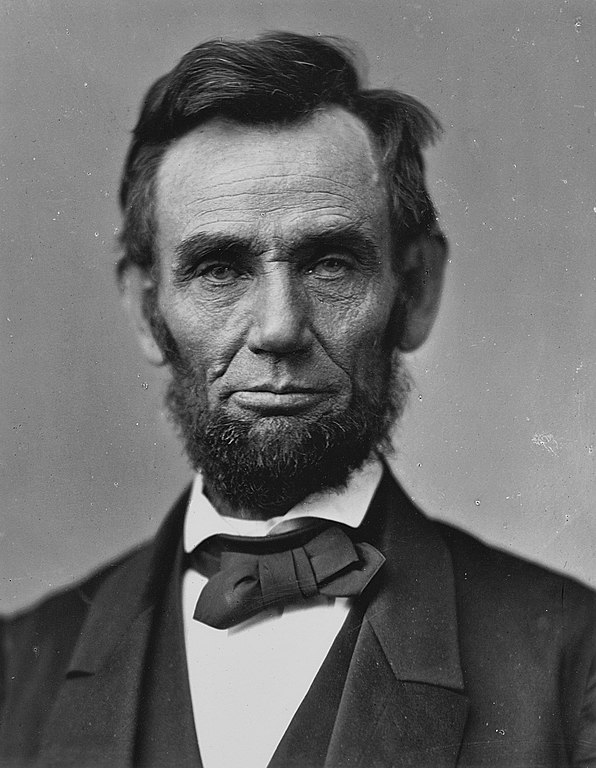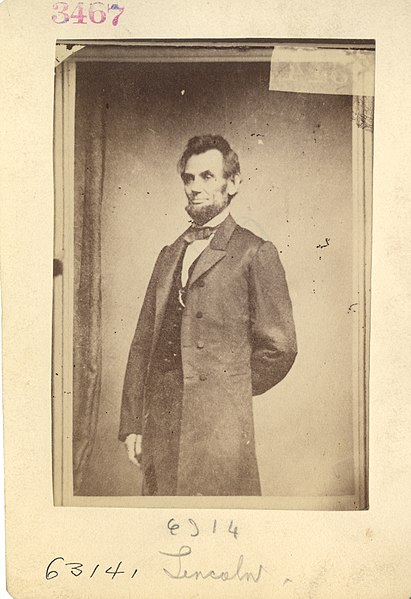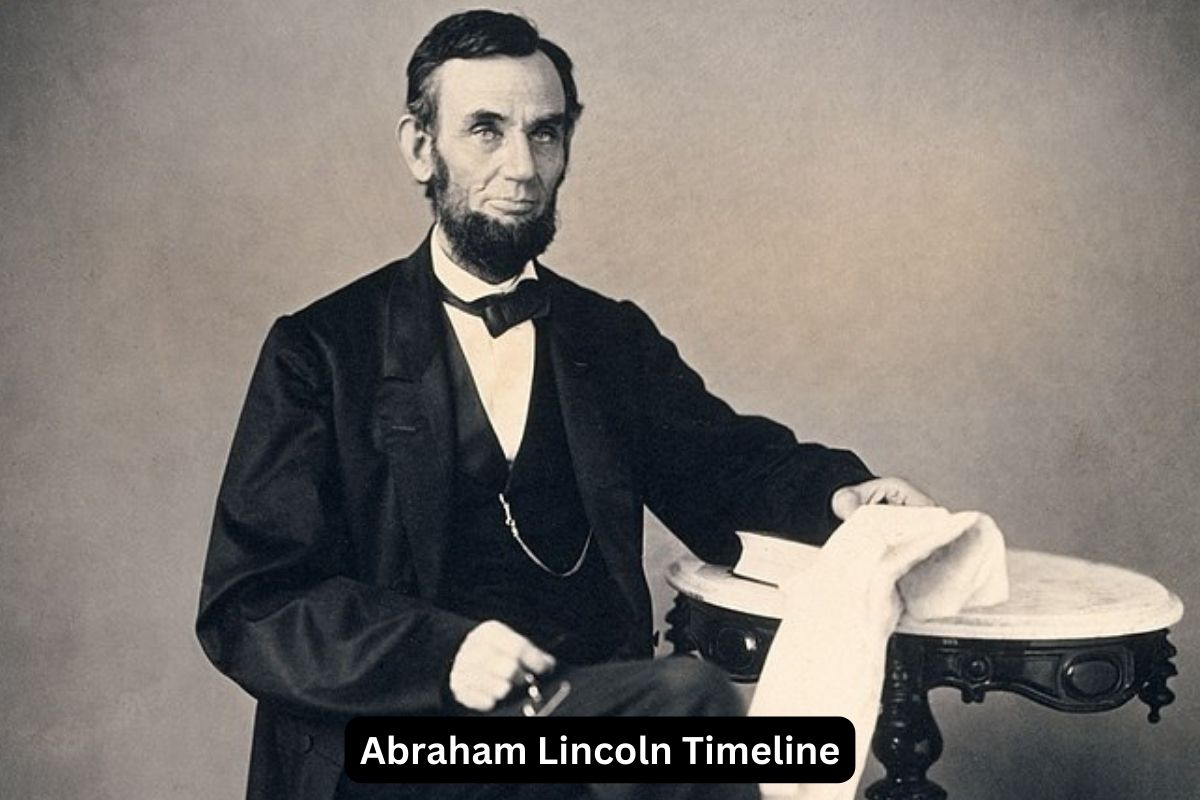Abraham Lincoln, the 16th President of the United States, is an iconic figure in American history.
His life’s journey, from humble beginnings in a log cabin to the highest office in the land, is a testament to his remarkable leadership and resilience.
This brief overview will explore key milestones in Lincoln’s life, from his early years in Kentucky and Indiana to his pivotal role in preserving the Union during the American Civil War and his enduring legacy as a symbol of American democracy and emancipation.
| Year | Event |
|---|---|
| 1809 | Abraham Lincoln is born in Hardin County, Kentucky. |
| 1816 | Lincoln’s family moves to Indiana. |
| 1818 | Lincoln’s mother, Nancy Hanks Lincoln, dies. |
| 1830 | Lincoln’s family moves to Illinois. |
| 1831 | Lincoln works various jobs and runs for public office. |
| 1832 | First run for the Illinois State Legislature. |
| 1834 | Elected to the Illinois State Legislature. |
| 1836 | Re-elected to the Illinois State Legislature. |
| 1837 | Becomes a licensed attorney and practices law. |
| 1842 | Marries Mary Todd. |
| 1846 | Elected to the U.S. House of Representatives. |
| 1848 | Serves one term in the U.S. House of Representatives. |
| 1854 | Speaks out against the Kansas-Nebraska Act. |
| 1856 | Joins the Republican Party. |
| 1858 | Debates Stephen A. Douglas in Illinois Senate race. |
| 1860 | Elected as the 16th President of the United States. |
| 1861 | Inaugurated as President; Civil War begins. |
| 1863 | Issues Emancipation Proclamation; delivers Gettysburg Address. |
| 1864 | Reelected as President. |
| 1865 | Civil War ends; Lincoln assassinated on April 14. |
| 1865 | Lincoln Memorial dedicated in Washington, D.C. |
| 1876 | Lincoln Memorial dedicated in Washington, D.C. |
Timeline of Abraham Lincoln
1809: Abraham Lincoln is born in Hardin County, Kentucky.
On February 12, 1809, Abraham Lincoln was born in a one-room log cabin on the Sinking Spring Farm in what is now part of present-day LaRue County, Kentucky.
Also Read: Accomplishments of Abraham Lincoln
He was born to Thomas Lincoln and Nancy Hanks Lincoln. His birthplace has since become a historical site known as the Abraham Lincoln Birthplace National Historical Park.

1816: Lincoln’s family moves to Indiana.
In 1816, when Lincoln was just seven years old, his family, including his father Thomas, stepmother Sarah Bush Lincoln, and sister Sarah, moved to the Indiana Territory. They settled in Spencer County, Indiana, seeking better economic opportunities and a fresh start.
1818: Lincoln’s mother, Nancy Hanks Lincoln, dies.
Tragedy struck the Lincoln family when Abraham Lincoln’s mother, Nancy Hanks Lincoln, died in 1818. Her death was attributed to a disease known as “milk sickness,” which was caused by drinking milk from cows that had eaten toxic plants.
Nancy’s death had a profound impact on young Abraham, as she had been a significant influence in his life.
1830: Lincoln’s family moves to Illinois.
In 1830, the Lincoln family once again relocated, this time to Macon County, Illinois. They made this move due to a combination of economic challenges and the desire for improved land prospects. Abraham, who was around 21 years old at the time, assisted his family in building a new life in Illinois.
1831: Lincoln moves out on his own and works various jobs, including as a rail-splitter and store clerk.
After his family’s move to Illinois, Abraham Lincoln struck out on his own. He took on a variety of jobs to support himself and gain experience, including working as a rail-splitter, farmhand, and store clerk. His time as a rail-splitter earned him the nickname “Honest Abe.”
1832: First run for the Illinois State Legislature.
In 1832, at the age of 23, Abraham Lincoln made his first foray into politics by running for a seat in the Illinois State Legislature as a member of the Whig Party. Although he was not successful in this initial attempt, it marked the beginning of his political career.
1834: Elected to the Illinois State Legislature.
Two years after his first campaign, in 1834, Lincoln successfully won a seat in the Illinois State Legislature as a member of the Whig Party.
This marked his first official entry into public office, and he served four terms in the state legislature from 1834 to 1842. During this time, he gained valuable experience and honed his political skills.

1836: Re-elected to the Illinois State Legislature.
In 1836, Lincoln was re-elected to the Illinois State Legislature, showing that he had garnered support and respect among his constituents.
His time in the state legislature allowed him to become well-acquainted with Illinois politics and to advocate for various policies and improvements in the state.
1837: Becomes a licensed attorney and practices law.
In 1837, Abraham Lincoln began a new chapter in his life by becoming a licensed attorney. He studied law independently and worked as a legal clerk in Springfield, Illinois.
His legal career would ultimately become a central part of his life, leading him to become one of the most renowned lawyers in Illinois.
1842: Marries Mary Todd.
On November 4, 1842, Abraham Lincoln married Mary Todd in Springfield, Illinois. Mary Todd was well-educated and came from a prominent Kentucky family.
Their marriage produced four sons: Robert, Edward (Eddie), William (Willie), and Thomas (Tad). Mary Todd Lincoln would play a significant role as the First Lady of the United States when her husband became president.
1846: Elected to the U.S. House of Representatives.
In 1846, Abraham Lincoln was elected to the United States House of Representatives as a member of the Whig Party. He represented Illinois’ 7th congressional district.
During his single term in Congress from 1847 to 1849, he focused on issues such as opposing the Mexican-American War and advocating for internal improvements.
1848: Serves one term in the U.S. House of Representatives.
Lincoln’s term in the U.S. House of Representatives was relatively short, as he served only one two-year term from 1847 to 1849. He did not seek re-election, but his time in Congress allowed him to gain valuable experience in national politics and make connections with influential figures.
1854: Speaks out against the Kansas-Nebraska Act.
One of the defining moments in Lincoln’s political career came in 1854 when he publicly opposed the Kansas-Nebraska Act.
This act, proposed by Senator Stephen A. Douglas, allowed for the expansion of slavery into new territories, including those where it had previously been prohibited.
Lincoln’s vocal criticism of the act and his belief that it violated the principles of the Missouri Compromise set the stage for his emergence as a leader in the anti-slavery movement.

1856: Joins the Republican Party.
In response to his opposition to the Kansas-Nebraska Act and the spread of slavery, Abraham Lincoln left the Whig Party and joined the newly formed Republican Party in 1856.
The Republican Party was founded on anti-slavery principles, and Lincoln quickly became one of its prominent members.
1858: Debates Stephen A. Douglas in Illinois Senate race.
The Lincoln-Douglas debates of 1858 are among the most famous political debates in American history. Abraham Lincoln, running as the Republican candidate, challenged the incumbent Democratic Senator Stephen A. Douglas for a seat in the U.S. Senate.
The debates focused primarily on the issue of slavery and the extension of slavery into the western territories.
While Lincoln did not win the Senate seat, his eloquence and arguments during the debates increased his national visibility and positioned him as a potential candidate for higher office in the future.
1860: Elected as the 16th President of the United States.
In November 1860, Abraham Lincoln made history by winning the presidential election as the first Republican candidate to become President of the United States.
He secured a majority of the electoral votes, but his victory in the deeply divided nation sparked fears of secession in the southern states, leading to a mounting crisis.
1861: Inaugurated as President; Civil War begins.
On March 4, 1861, Abraham Lincoln was inaugurated as the 16th President of the United States. However, his presidency began during a time of immense turmoil. Several southern states had already seceded from the Union, and the American Civil War loomed on the horizon.
Lincoln faced the formidable task of preserving the Union and resolving the secession crisis. Just weeks after his inauguration, the Civil War began when Confederate forces attacked Fort Sumter in South Carolina on April 12, 1861.
1863: Issues Emancipation Proclamation; delivers Gettysburg Address.
On January 1, 1863, President Lincoln issued the Emancipation Proclamation, a historic executive order that declared all enslaved people in Confederate-held territory to be free.
This proclamation marked a significant turning point in the Civil War, aligning the Union’s war effort with the abolition of slavery as a moral cause.
Later in the year, on November 19, 1863, President Lincoln delivered the Gettysburg Address at the dedication of the Soldiers’ National Cemetery in Gettysburg, Pennsylvania.
In this brief but powerful speech, Lincoln emphasized the principles of liberty, equality, and democracy, emphasizing the importance of preserving the Union.
1864: Reelected as President.
Despite the ongoing Civil War and significant political challenges, Abraham Lincoln ran for re-election as President in 1864. He faced off against Democrat George McClellan, who had previously been a Union general.
Lincoln campaigned on a platform of continuing the fight to preserve the Union and abolish slavery. He won re-election in a landslide, securing a second term as President.
1865: Civil War ends; Lincoln assassinated on April 14.
The Civil War came to a decisive end in April 1865 when Confederate General Robert E. Lee surrendered to Union General Ulysses S. Grant at Appomattox Court House in Virginia.
This momentous event effectively marked the conclusion of the Civil War and the preservation of the United States as a single nation.
Tragically, just days after the Confederate surrender, on the evening of April 14, 1865, President Abraham Lincoln was assassinated by Confederate sympathizer John Wilkes Booth while attending a play at Ford’s Theatre in Washington, D.C. He died the following day, on April 15, 1865, making him the first U.S. president to be assassinated.
1876: Lincoln Memorial dedicated in Washington, D.C.
The memory of Abraham Lincoln and his role in preserving the Union and abolishing slavery is honored with the construction of the Lincoln Memorial in Washington, D.C.
The memorial was designed by architect Henry Bacon and features a seated statue of Lincoln. It was dedicated on May 30, 1922, and has since become an iconic symbol of the United States and a site of national significance.
